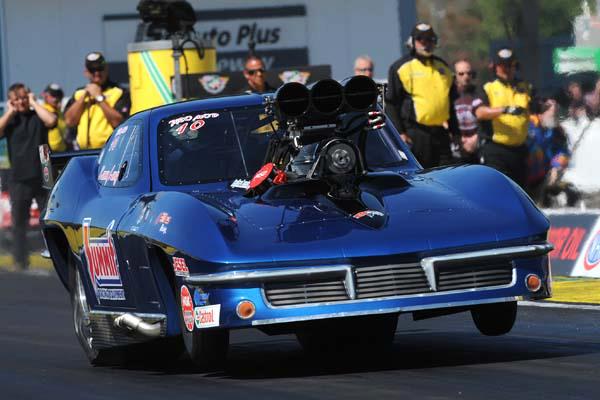How does Warren Johnson seem to squeeze every last ounce of power from his engines? What is the secret to Greg Anderson’s consistency race in and race out?
Those are good questions. And we’ve got good answers, because guys like Anderson, Don Garlits, and other accomplished professional and sportsman racers have shared some of the secrets to their incredible success with us. Read and learn as they take you from pre-race preparation to the finish line over the next few weeks. This third part of our series is all about driver performance and how to achieve the consistency needed to win.
When all the prep work and final tuning is done and you’re at the starting line, the outcome of the race ultimately comes down to one last thing: Your performance. Here’s how some top professionals perform from start to finish:
1.
“The three most important things you can do to get an edge on the starting line are maintain a consistent starting-line rpm, focus on the tree, and know your opponent’s staging style.”
—Fred Hahn, former IHRA/NHRA Pro Modified driver
2.
“Use a rev limiter during burnouts to guarantee consistent tire spin with each burnout. This will help you maintain consistent tire temperature and stickiness and ensure optimal traction for each launch.”
—Clay Millican, NHRA Top Fuel driver
3.
“Part of racing is overcoming adversity. All racers professional or sportsman have problems. It’s how you deal with those problems that make the difference. Keeping calm and your head clear allows you to analyze the problems, diagnose what is wrong and then repair it. Racers who win a lot are very good at staying focused and don’t let emotion get in the way.”—Greg Anderson, NHRA Pro Stock driver
4.
“Staging consistency is more important than staging technique. No matter which technique you use—shallow or deep—success will only come after you have established a consistency and comfort level in the staging process. Settle on your technique, then stick with it race after race.” —Clay Millican
5.
“Over-revving your engine on a burnout is not a good thing to do. And trying to control the rpm is sometimes difficult. Get an rpm limiter, electronic for naturally aspirated engines or a manual linkage stop (for blower cars) like the fuel cars use. If it’s electronic, have it on a switch so it works during the entire burnout, not just while the line loc is applied. But remember to remove the mechanical stop or switch off the electronic one after the burnout.” —Frank Hawley
6.
“Staging your car straight sounds very basic. However, it’s one of the things some drivers don’t do consistently and it takes practice to do it correctly. When no one else is running at the track, park your car on the starting line, get out, and look at it from the rear. Get the car set straight then get back in the seat and make a mark on the windshield or windscreen that will help you line it up when you’re racing.”
—Frank Hawley
7.
“Reaction time is dramatically affected by lighting, with contrast being the most crucial factor. Adjust your launch techniques when racing in direct sunlight, in overcast skies, and at night. Use sunglasses or shaded lenses if needed.” —David Rampy, NHRA Comp Eliminator driver
8.
“In drag racing, little inconsistencies can make a big difference in performance. If possible, have someone videotape your passes so you can watch for inconsistencies in burnout, staging, and other areas of your performance from run to run.” —Greg Anderson
Looking race preparation or race tuning tips? Check out Racer Confidential (Part 1) for race prep pointers or Racer Confidential (Part 2) for mechanical and race day tuning secrets.


Very helpful